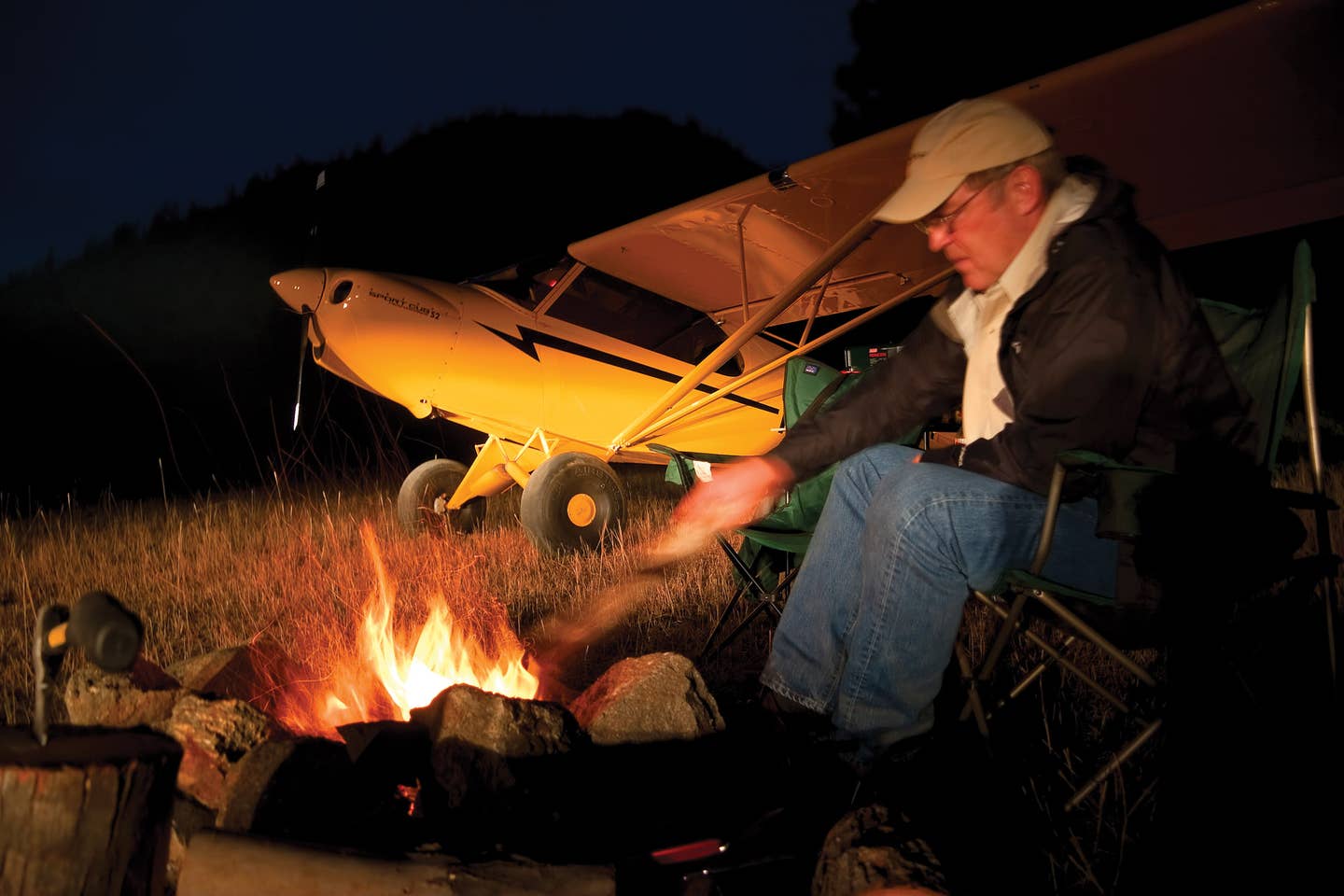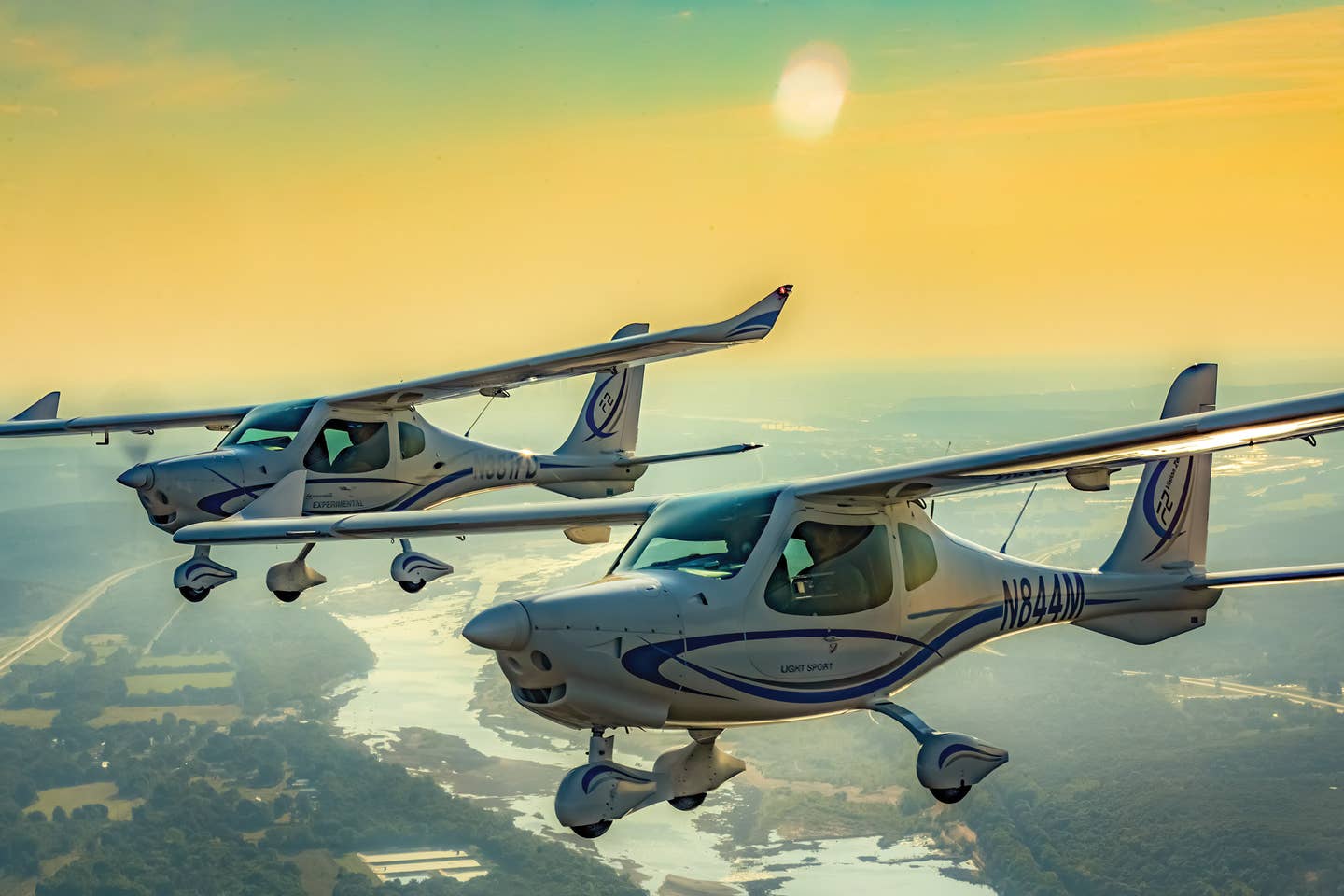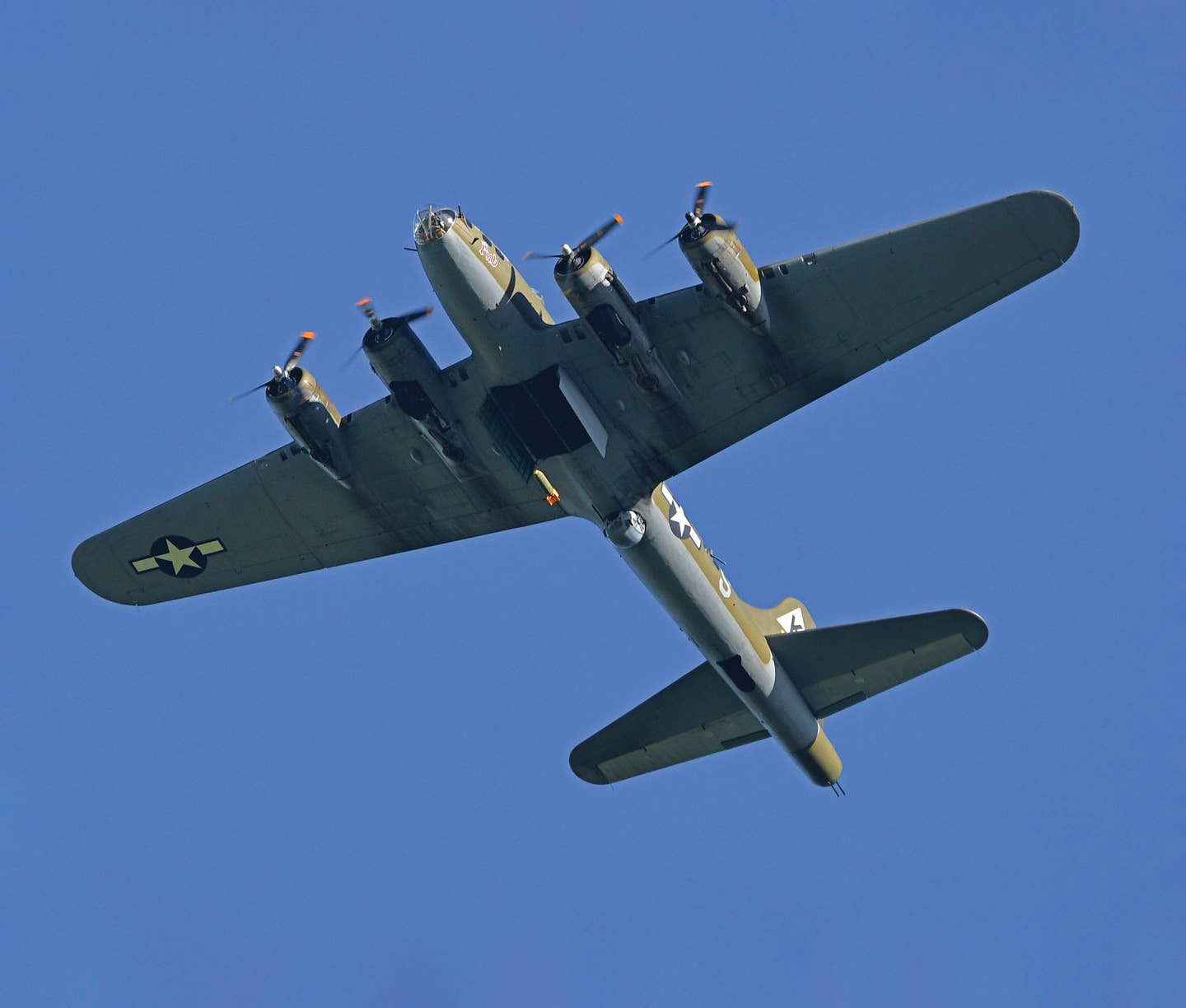 From the cockpit jump seat of a 1954 Boeing KC-135 Stratotanker, our clunky, creaky roll on takeoff seems a stark contrast to the day's activities at Davis-Monthan Air Force Base in Tuscon, Ariz. After what feels like an eternity on an endless runway, we slowly lift off, leaving behind an incredible assortment of U.S. Air Force fighter jets, including F-15 Eagles, F-16 Falcons, F-4 Phantoms, A-10 Warthogs and two F-22 Raptors, on the ramp below.
From the cockpit jump seat of a 1954 Boeing KC-135 Stratotanker, our clunky, creaky roll on takeoff seems a stark contrast to the day's activities at Davis-Monthan Air Force Base in Tuscon, Ariz. After what feels like an eternity on an endless runway, we slowly lift off, leaving behind an incredible assortment of U.S. Air Force fighter jets, including F-15 Eagles, F-16 Falcons, F-4 Phantoms, A-10 Warthogs and two F-22 Raptors, on the ramp below.
For four days, these state-of-the-art aircraft have gathered with historic P-51 Mustangs, the heroes of World War II, for the Air Combat Command's Heritage Flight Conference. During this annual event, pilots train for the upcoming air show season to fly in the Heritage Flight, a performance that mixes historic and modern aircraft in two-, three- and four-ship formations. Successful completion of the training earns pilots certification from the FAA and ACC's Air and Space Operations Directorate, clearing them to fly in demonstrations around the country.
"Talk about awe-inspiring," exclaimed Major Paul Moga, commander of the F-22 Demonstration Team. "To realize that the Air Force can put the best fighter jet the world has ever seen in formation with its World War II equivalent is truly something special." Making the event even more spectacular, this year marks the 10th anniversary of the Heritage Flight, the 60th anniversary of the U.S. Air Force and the 65th anniversary of the P-51 Mustang.
The KC-135's four GE CFM56 engines, mounted under 35-degree swept wings, lift us---not an easy task with our takeoff weight at 200,000 pounds---toward our mission: aerial refueling of six F-16 Falcons over White Sands, N.M. Nicknamed "the Tacos," our rendezvous group is from the New Mexico Air National Guard's 150th Fighter Wing. Nearly all of the internal fuel in the Stratotanker, designed specifically for aerial refueling, can be pumped through the aircraft's boom into other aircraft; maximum transfer fuel load is a whopping 200,000 pounds.
At the rear end of the massive aircraft, I lie face down in the boom bay next to the boom operator, Master Sergeant Bob Derryberry, as the first F-16 approaches in trail at flight level 170. Calmly, he communicates on the radio with the pilots of the F-16 and our KC-135 while manipulating the boom with surgeon-like precision. "Each airplane has its own unique qualities, and when you add in individual styles for each receiver pilot, each session is always different," explains Derryberry. "The most difficult part of air refueling would be at night. The depth perception is not the same as during the day. Throw in some turbulence, and it gets real sporty!" The Tacos prove to be a thirsty bunch, consuming 12,000 pounds of our fuel. (But it's all good; we have another 58,000 pounds remaining.)
Back in the cockpit, I watch the other fighters as they fly off of us in wing position---they look so small, given our 130-foot wingspan---waiting their turn to receive fuel. "Give them a hand signal," encourages the copilot, Lieutenant Colonel Keith Pennington, as I snap photographs. Despite the enormity of the KC-135 and the fierceness of the F-16s, using simple hand signals reminds me, more or less, of a typical air-to-air photo session. Well, maybe less, as I point forward, gesturing to the mysterious fighter pilot hidden behind his visor, racing alongside us at 315 KIAS. "Most of the fighters are not very stable at slower airspeeds," explains Derryberry. "We speed up to help them maintain better control. When we drag fighters across an ocean, we speed up for the refuel and then slow down to cruise."
 After the mission is complete and the Tacos are full, they break out of formation, and we make our way northeast toward Rickenbacker International Airport, in Columbus, Ohio. After climbing to flight level 350, we cruise over the middle of America. The vastness of the aircraft's cargo deck, which can hold up to 83,000 pounds and 37 passengers, makes our giant tanker seem that much larger. I return to the boom bay, where I lay, staring straight down through this window above earth, and for a few moments, there's a sensation of floating.
After the mission is complete and the Tacos are full, they break out of formation, and we make our way northeast toward Rickenbacker International Airport, in Columbus, Ohio. After climbing to flight level 350, we cruise over the middle of America. The vastness of the aircraft's cargo deck, which can hold up to 83,000 pounds and 37 passengers, makes our giant tanker seem that much larger. I return to the boom bay, where I lay, staring straight down through this window above earth, and for a few moments, there's a sensation of floating.
Strong crosswinds prevail at Rickenbacker, and the KC-135 creaks and moans some more during the descent into the cold Ohio snow---Arizona's desert skies are now just a distant memory. "Landings are easy," remarks Pennington coolly, but I'm not so sure, and sitting toward the back of the cargo deck, it's clear he works the rudder hard.
Commissioned in 1941 by President Roosevelt, Rickenbacker came to life as an Army Air Base originally named Lockbourne. It was created with the purpose of training B-17 pilots and Women Air Force Service Pilots (WASP). In the 1970s, it was renamed in honor of World War I ace Captain Eddie Rickenbacker, and although it was closed approximately 10 years later, the reserve and guard units stayed on. Today, the Columbus Regional Airport Authority shares operational duties at the airport.
Between September 27 and 30, Rickenbacker and the U.S. Air Force will host Air Force Heritage Week, during which a special event, the Gathering of Mustangs and Legends, will take place. Approximately 100 P-51 Mustangs are expected to partake in the festivities---more than 15,000 of these aircraft were produced, but only 150 are still in flying condition. Steeped in history, the attending Mustangs will include favorites such as Crazy Horse and Crazy Horse 2, both owned by Lee Lauderback, and other beautifully restored airplanes such as Cripes A' Mighty 3rd, owned by Kermit Weeks, and 44-72339 owned by Jim Cavanaugh (see "Cavanaugh's Flight Through Time" in November/December 2006 Pilot Journal).
But aircraft aren't the only stars of the show. Fifty-one legendary pilots will also be honored, including WWII aces, Tuskegee Airmen, WASPs and accomplished aviators such as Chuck Yeager, the test pilot who first broke the sound barrier in 1947, and Bob Hoover, the ultimate pilot's pilot (see "The Man in the Straw Hat" in May/June 2007 Pilot Journal). In addition to the Heritage Flights, additional performances will be flown by other World War II fighter aircraft, air show performers such as the Red Baron Pizza Squadron, and the USAF Thunderbirds. More than 200,000 visitors are expected to attend this celebration of aviation history and its heroes.
One pilot, Humberto Lobo de la Garza, intends to fly his P-51 Mustang, Shangri-La, from Monterrey, Mexico. "For me, the gathering represents a dream come true. I can't wait!

Subscribe to Our Newsletter
Get the latest Plane & Pilot Magazine stories delivered directly to your inbox






